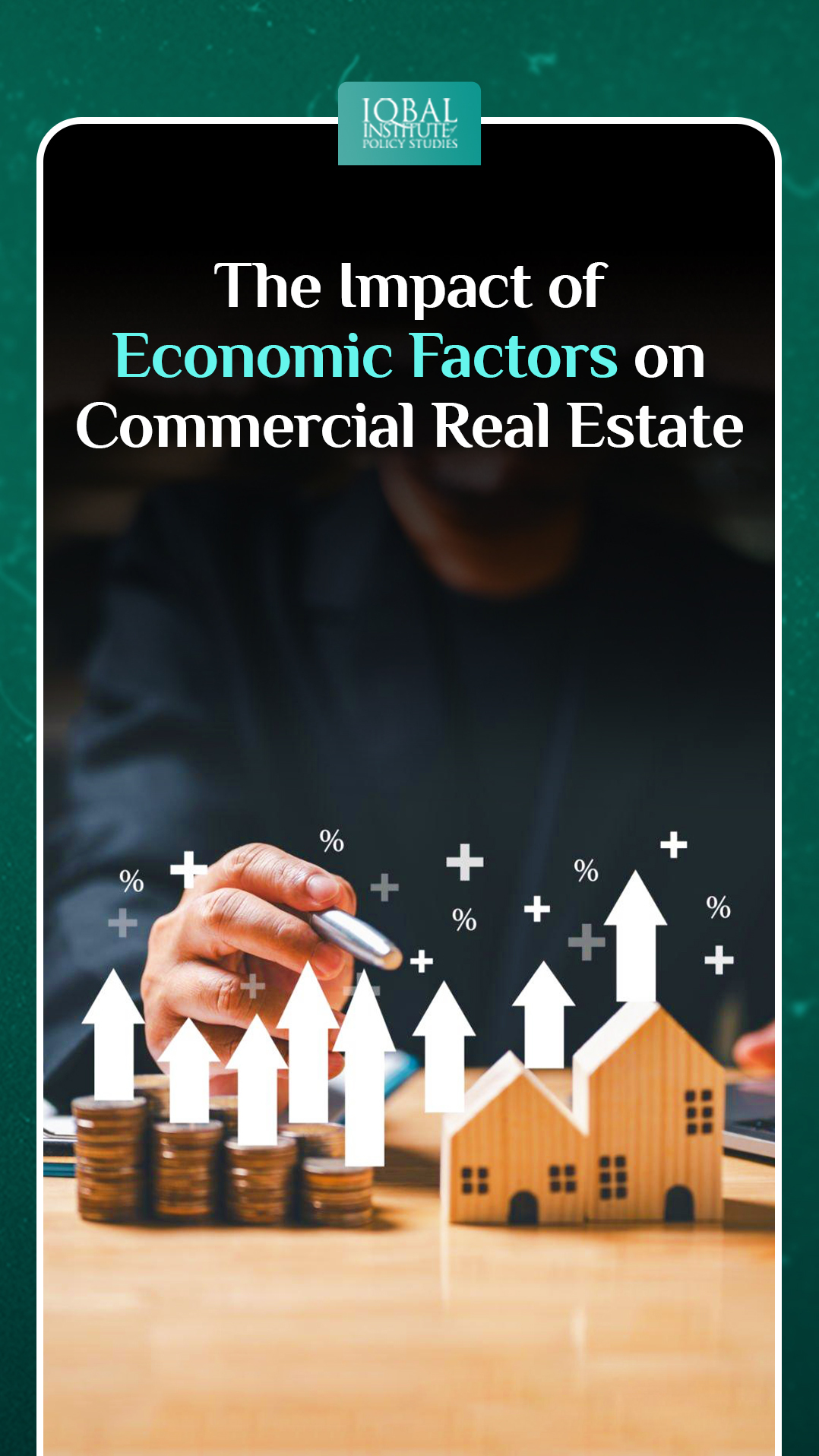In the complex and ever-evolving landscape of Pakistan’s commercial real estate, the interplay between economic forces and market dynamics is akin to an intricate tapestry waiting to be unraveled. This blog undertakes the formidable task of delving into the depths of this relationship, scrutinizing macroeconomic indicators, dissecting regulatory frameworks, and examining demographic shifts. Through an extensive exploration, we aim to provide stakeholders with a comprehensive understanding of the factors shaping the commercial real estate sector in Pakistan.
Economic Indicators
Gross Domestic Product (GDP)
To comprehend the nuanced impact of GDP on commercial real estate, it’s imperative to go beyond the aggregate figure. The sectoral breakdown of GDP, with a keen eye on agriculture, manufacturing, and services, offers insights into the types of commercial spaces that may experience heightened demand. A nuanced understanding of sector-specific growth can guide investors and developers in strategically aligning their projects.
Inflation and Interest Rates
The intersection of inflation and interest rates unveils a layered narrative. Examining how inflationary pressures impact construction costs and, subsequently, the pricing of commercial properties provides critical insights for market participants. Moreover, a historical analysis of interest rate trends offers a predictive lens for understanding real estate financing costs and their potential fluctuations.
Foreign Direct Investment (FDI)
Beyond the quantitative aspects, a qualitative exploration of FDI is indispensable. Scrutinizing the types of industries attracting foreign investment and understanding their synergy with the demand for specific commercial spaces can guide stakeholders in strategic decision-making. Unraveling the qualitative impact of international capital on the commercial real estate landscape is key to identifying emerging opportunities.
Employment Trends
A granular examination of employment trends involves breaking down data by sector and region. Are certain industries concentrated in specific urban centers, and how might this concentration impact the demand for office spaces and commercial hubs? Additionally, understanding the implications of evolving employment patterns, such as the growth of the gig economy, is crucial for anticipating shifts in the demand for flexible workspaces.
Currency Exchange Rates
Beyond their impact on property values, currency exchange rates influence the affordability of commercial leases for businesses. A detailed analysis of these fluctuations involves considering how currency dynamics affect rental income, attracting both domestic and international businesses to commercial properties.
Policy and Regulatory Environment
Government Initiatives
The impact of government initiatives on commercial real estate extends beyond surface-level analysis. A detailed examination of recent policy shifts and their implications can uncover hidden opportunities. Are there tax incentives for specific types of developments? How do government-driven infrastructure projects impact the accessibility and desirability of certain locations for commercial purposes?
Infrastructure Development
Moving beyond a generic understanding of infrastructure, a deeper exploration of subcategories such as digital infrastructure and sustainable development initiatives offers a nuanced perspective. How might advancements in technology and a focus on eco-friendly buildings reshape the landscape of commercial real estate? Understanding these nuances is critical for anticipating the future needs and preferences of businesses.
Land Use Policies
An in-depth analysis of recent changes in land use policies is paramount. Beyond their immediate impact on property values, shifts in zoning laws can influence the potential uses of commercial spaces.
Market Trends and Demographics:
Urbanization
Urbanization is a multifaceted trend that warrants a comprehensive examination. Factors such as population density, migration patterns, and the emergence of satellite cities all contribute to the evolving demand for specific types of commercial real estate in different regions. Understanding these nuances is essential for anticipating future trends and strategically positioning developments.
Technology and Remote Work
The evolution of remote work is a transformative trend that demands meticulous exploration. What technologies are businesses adopting, and how do these impact the spatial requirements of commercial properties? Can the rise of remote work be leveraged to reimagine the purpose of commercial spaces, potentially leading to the development of innovative coworking and flexible office solutions?
Conclusion
In the pursuit of decoding the intricate relationship between economic forces and commercial real estate in Pakistan, a comprehensive understanding demands meticulous exploration. As stakeholders navigate this dynamic environment, deciphering both broad economic indicators and the nuanced details that shape the landscape is imperative. Armed with a detailed understanding of the intricate interplay between economic forces, stakeholders are poised not just to react to market shifts but to proactively seize opportunities in this ever-shifting terrain. As Pakistan’s commercial real estate sector continues to evolve, those equipped with a meticulous understanding of the multifaceted dynamics will undoubtedly thrive amidst the challenges and opportunities that lie ahead.
This article is written by Radma Nouman. Radma is a research analyst at the Iqbal Institute of Policy Studies (IIPS).



Leave a Reply